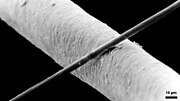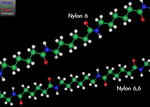Thermoplastic Polyurethane Table of properties
Thermoplastic Polyurethane Table of properties - Search results - Wiki Thermoplastic Polyurethane Table Of Properties
The page "Thermoplastic+Polyurethane+Table+of+properties" does not exist. You can create a draft and submit it for review or request that a redirect be created, but consider checking the search results below to see whether the topic is already covered.
- Thermoplastic polyurethane (TPU) is any of a class of polyurethane plastics with many properties, including elasticity, transparency, and resistance to...
 some thermoplastic polyurethanes are also produced. The most common application of polyurethane is as solid foams, which requires the presence of a gas...
some thermoplastic polyurethanes are also produced. The most common application of polyurethane is as solid foams, which requires the presence of a gas... Plastic (redirect from Property modifiers)classifications of plastics are based on qualities relevant to manufacturing or product design for a particular purpose. Examples include thermoplastics, thermosets...
Plastic (redirect from Property modifiers)classifications of plastics are based on qualities relevant to manufacturing or product design for a particular purpose. Examples include thermoplastics, thermosets... Polymer (section Properties)classified as bulk properties, or intensive properties according to thermodynamics. The bulk properties of a polymer are those most often of end-use interest...
Polymer (section Properties)classified as bulk properties, or intensive properties according to thermodynamics. The bulk properties of a polymer are those most often of end-use interest... (HIPS), thermoplastic polyurethane (TPU) and aliphatic polyamides (nylon). Fused deposition modeling was developed by S. Scott Crump, co-founder of Stratasys...
(HIPS), thermoplastic polyurethane (TPU) and aliphatic polyamides (nylon). Fused deposition modeling was developed by S. Scott Crump, co-founder of Stratasys... typically of polyvinyl butyral (PVB), ethylene-vinyl acetate (EVA), ionoplast polymers, cast in place (CIP) liquid resin, or thermoplastic polyurethane (TPU)...
typically of polyvinyl butyral (PVB), ethylene-vinyl acetate (EVA), ionoplast polymers, cast in place (CIP) liquid resin, or thermoplastic polyurethane (TPU)... PET, PETE, or the obsolete PETP or PET-P), is the most common thermoplastic polymer resin of the polyester family and is used in fibres for clothing, containers...
PET, PETE, or the obsolete PETP or PET-P), is the most common thermoplastic polymer resin of the polyester family and is used in fibres for clothing, containers... Fiber (section Typical properties of selected fibers)properties of the sample natural fibers as compared to the properties of artificial fibers. The tables above just show typical properties of fibers, in...
Fiber (section Typical properties of selected fibers)properties of the sample natural fibers as compared to the properties of artificial fibers. The tables above just show typical properties of fibers, in... Polyester (category Thermoplastics)macromonomers for the production of polyurethanes. hyperbranched polyesters are used as rheology modifiers in thermoplastics or as crosslinkers in coatings...
Polyester (category Thermoplastics)macromonomers for the production of polyurethanes. hyperbranched polyesters are used as rheology modifiers in thermoplastics or as crosslinkers in coatings... Composite material (redirect from Types of composite material)have notably dissimilar chemical or physical properties and are merged to create a material with properties unlike the individual elements. Within the finished...
Composite material (redirect from Types of composite material)have notably dissimilar chemical or physical properties and are merged to create a material with properties unlike the individual elements. Within the finished... Poly(methyl methacrylate) (category Thermoplastics)methacrylate. It is used as an engineering plastic, and it is a transparent thermoplastic. PMMA is also known as acrylic, acrylic glass, as well as by the trade...
Poly(methyl methacrylate) (category Thermoplastics)methacrylate. It is used as an engineering plastic, and it is a transparent thermoplastic. PMMA is also known as acrylic, acrylic glass, as well as by the trade... Paint (section Thermoplastic Mechanisms)interpenetration and fusion of formerly discrete particles. Thermoplastic film-forming mechanisms are sometimes described as "thermoplastic cure," but that is...
Paint (section Thermoplastic Mechanisms)interpenetration and fusion of formerly discrete particles. Thermoplastic film-forming mechanisms are sometimes described as "thermoplastic cure," but that is... Shellac (section Properties)cheaper and more abrasion- and chemical-resistant finishes, such as polyurethane, have almost completely replaced it in decorative residential wood finishing...
Shellac (section Properties)cheaper and more abrasion- and chemical-resistant finishes, such as polyurethane, have almost completely replaced it in decorative residential wood finishing...- (PS) Nylon, nylon 6, nylon 6,6 Teflon (Polytetrafluoroethylene) Thermoplastic polyurethanes (TPU) These polymers are often better known through their brand...
 Nylon (category Pages displaying short descriptions of redirect targets via Module:Annotated link)silk-like. They are thermoplastic, which means that they can be melt-processed into fibers, films, and diverse shapes.: 2 The properties of nylons are often...
Nylon (category Pages displaying short descriptions of redirect targets via Module:Annotated link)silk-like. They are thermoplastic, which means that they can be melt-processed into fibers, films, and diverse shapes.: 2 The properties of nylons are often... Plastic welding (section Testing of plastic welds)a process of uniting softened surfaces of materials, generally with the aid of heat (except for solvent welding). Welding of thermoplastics is accomplished...
Plastic welding (section Testing of plastic welds)a process of uniting softened surfaces of materials, generally with the aid of heat (except for solvent welding). Welding of thermoplastics is accomplished... Plastic recycling (redirect from Recycling of plastic)p. 22. ISBN 978-0-12-817880-5. The majority of polyurethanes are thermosets, however some thermoplastics are also produced, for instance spandex PP&A...
Plastic recycling (redirect from Recycling of plastic)p. 22. ISBN 978-0-12-817880-5. The majority of polyurethanes are thermosets, however some thermoplastics are also produced, for instance spandex PP&A... Solid (redirect from Solid (state of matter))natural organic polymers for centuries in the form of waxes and shellac, which is classified as a thermoplastic polymer. A plant polymer named cellulose provided...
Solid (redirect from Solid (state of matter))natural organic polymers for centuries in the form of waxes and shellac, which is classified as a thermoplastic polymer. A plant polymer named cellulose provided... very high molar mass are added to engineering thermoplastics, again to achieve flame retardant properties. Fluorinated epoxy resins have been investigated...
very high molar mass are added to engineering thermoplastics, again to achieve flame retardant properties. Fluorinated epoxy resins have been investigated... Cellulose fiber (section Structure and properties)to produce the first successful thermoplastic polymer, celluloid, by Hyatt Manufacturing Company in 1870. Production of rayon ("artificial silk") from...
Cellulose fiber (section Structure and properties)to produce the first successful thermoplastic polymer, celluloid, by Hyatt Manufacturing Company in 1870. Production of rayon ("artificial silk") from...
- polycarbonate, transparent thermoplastic material, or vinyl curtains have been used to reduce emissions (Figure 7). When designing these types of enclosures, it is
- bonding (incomplete) Thermo-setting and w:thermoplastic w:Epoxy w:Modified epoxy Phenolics w:Polyurethane w:Adhesive alloys Miscellaneous other powders

















